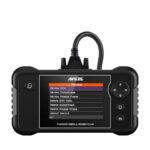California has strict emissions regulations, and the OBD2 readiness monitors play a crucial role in ensuring your vehicle complies. This guide provides a detailed overview of these monitors, common issues, and solutions to help you pass your Smog Check.
Understanding OBD2 Readiness Monitors
OBD2 readiness monitors are self-diagnostic tests performed by your vehicle’s onboard computer to evaluate the functionality of its emission control systems. These monitors track various components, including the catalytic converter, oxygen sensors, evaporative system, and more. When a monitor completes successfully, it indicates that the corresponding system is operating within acceptable parameters. However, incomplete monitors can lead to a failed Smog Check.
Why are California OBD2 Readiness Monitors Important?
California’s Smog Check program utilizes the OBD2 system to assess vehicle emissions. A key part of this assessment involves checking the status of the readiness monitors. Incomplete monitors suggest potential issues with the emission control systems and will result in a failed inspection. Therefore, ensuring your monitors are complete is essential for passing the Smog Check. This process helps maintain California’s air quality standards by identifying vehicles with potential emissions problems.
Common Causes of Incomplete OBD2 Readiness Monitors
Several factors can contribute to incomplete readiness monitors:
- Recent Repairs: Disconnecting the battery or replacing emission-related components can reset the monitors.
- Infrequent Driving: Certain monitors require specific driving conditions to complete, and infrequent or short trips may prevent them from running.
- Malfunctioning Components: A faulty sensor, catalytic converter, or other emission component can prevent a monitor from completing.
- Software Issues: In some cases, software glitches in the vehicle’s computer can interfere with monitor completion. This is especially true for some Ford models, as highlighted in Section D of the original document.
Addressing Incomplete Monitor Issues
If you encounter incomplete monitors, consider these solutions:
- Drive Cycle: Performing a specific driving pattern, often outlined in your owner’s manual or available online, can help complete the monitors. This involves variations in speed, acceleration, and engine load to simulate real-world driving conditions necessary for monitor completion. However, for vehicles like the 2002 Hyundai Sonata, multiple drive cycles may be needed as outlined in Section D.
- Diagnostic Scan: Using an OBD2 scanner can pinpoint trouble codes related to malfunctioning components that are preventing monitor completion. This allows for targeted repairs instead of guesswork.
- Professional Repair: If a malfunctioning component is identified, seek professional repair to address the issue and allow the monitors to reset. This is crucial for issues like the NOx aftertreatment monitor problems in certain Dodge/Ram models, as noted in Section D.
- Software Updates: Dealerships can perform software updates to address known issues that prevent monitor completion. Certain BMW, Ford, and Lexus models have had such issues, as detailed in Section D and F.
Specific Vehicle Issues and Recalls
Certain vehicle makes and models are known to have specific issues with OBD2 readiness monitors. The original document provides an extensive list of these vehicles, outlining the problems and potential solutions. Consulting this list, specifically Sections D, E, and F, can be invaluable if you are experiencing monitor issues with a particular vehicle. These sections detail issues ranging from communication problems to specific monitor completion failures. For example, certain Chevrolet and GMC diesel models from 1998-2005 are not OBD-II certified, impacting how they are tested. Additionally, there’s information regarding recalls and technical service bulletins (TSBs) related to specific monitor issues, such as the Chrysler PT Cruiser catalyst monitor problem detailed in Section D.
Conclusion
Understanding California’s OBD2 readiness monitors is critical for passing your Smog Check. By addressing incomplete monitors promptly and utilizing available resources, you can ensure your vehicle complies with emissions regulations and contributes to a cleaner environment. Refer to the original document’s detailed tables for specific vehicle information and always consult a qualified technician for diagnosis and repair. Remember that passing the Smog Check not only keeps your vehicle legally on the road but also helps maintain California’s air quality standards.


